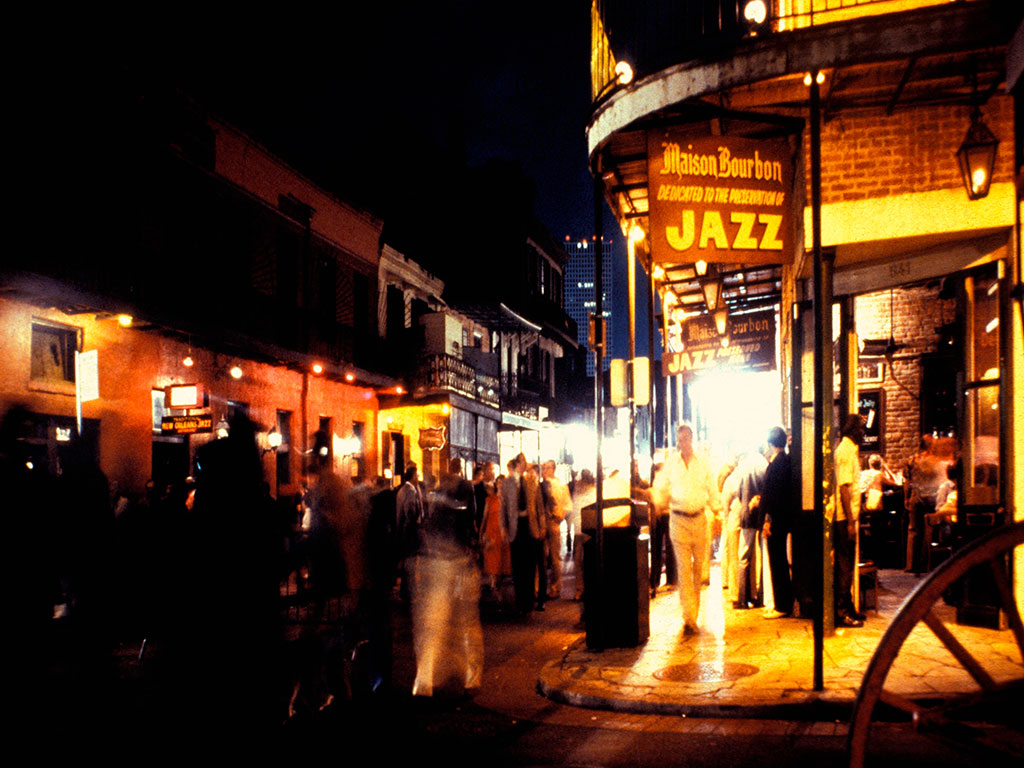When Easy Rider starts out, with two dreamers riding off into the sunset looking for a better world, it is hard to imagine how fast the violence escalates towards the end of the film. The brutality of modern life is one of the major themes of the picture, simmering below the surface, until our anti-heroes are run from a café in Louisiana and their travelling companion is lynched in the night. Then it becomes the main plot point.
Devasted by the loss of their friend, Billy and Wyatt finally ride on to New Orleans, the promised land of debauchery and liberation they had been seeking since the opening scenes. But their journey has changed them, and what they find is not the carefree party time they imagined.
Not a lot of New Orleans appears in the film as Billy and Wyatt head straight to a brothel and then drop acid with some prostitutes in a graveyard where they all hallucinate and are consumed by paranoia. But there are a lot of wonderful things to see and do in New Orleans, that Billy and Wyatt might have missed as they pursued chemical-induced escapism in a rabbit-hole.
For starters the city is one of the most diverse in the US, having been founded by the French Mississippi Company on land previously occupied by the Chitimacha people. The city, named after Duke Philippe d’Orléans, was soon ceded to the Spanish Empire, and it became an important rebel stronghold when the Civil War broke out. Later it became a popular destination for Haitian emigrés, following that country’s revolution. Today the city is a hot-pot of French, Spanish, Creole and Native American cultures, all simmering in the swampy heat of the bayou.
The city is famous for its French Creole architecture, its Cajun spices and voodoo traditions. Billy and Wyatt are initially attracted to New Orleans because of its famed Mardi Gras celebration- a Catholic tradition that celebrates Ash Wednesday and the beginning of lent. It literally means ‘Fat Wednesday’ in French, and it was an opportunity for Catholics to eat and drink in abundance before the fasting and religious obligation of the Quadragesima.
Surviving Katrina
The party has come a long way from its Roman Catholic traditions: today it is a major tourist destination, and the streets of the old French Quarter often become an huge party. Mardi Gras is a particularly significant celebration in New Orleans as it was the only time of the year when people of all races and backgrounds took to the streets to celebrate together; Louisiana has always been a state deeply divided along racial lines.
Of course, the New Orleans of 1969 no longer exists. Wyatt and Billy would have found a city in the throes of the civil rights movements, having only repealed segregationist Jim Crow laws four years before. It was a poor but vibrant community and a major site of sit-ins, protests and manifestations during the movements because of its large African-American community.
In 2005 Hurricane Katrina submerged the entire city in 15 metres of water washed up from the Mississippi Delta. It was one of the biggest natural disasters to ever hit the continental US, leaving behind a body count of over 1,500. Relief operations were notoriously lacking and it took a number of years for the city to recover from flooding and destruction. Katrina also caused something of a shift in the urban sprawl, with traditional poor families that had originally occupied houses and flats in historic neighbourhoods, sometimes for generations, being forced out, unable to cope with the costs of regeneration. It is said that much of the original vibrancy and spirit of the city was partially washed away in the floods. But that is not to say that it has been destroyed, the Big Easy is still a hotbed of cultural activities, music, jazz, arts and sports, and is one of the most creatively productive cities in the US.
A sudden end
Billy and Wyatt ride out of New Orleans when they have recover from their LSD trip, and make camp out of town. Billy is happy that they made it, but Wyatt is subdued: “We blew it,” he says, without elaborating. Having reached their goal, the two are unsure of how to carry on, or what to do next. Eventually they decide to head east to Florida, and retire there, but on the way they raise the wrath of a couple of rednecks who shoot them down, threatened by their eccentric appearance. “Why don’t you get a haircut?” one of them shouts at Billy before firing his shotgun at the biker. Wyatt is shot down soon after, and his gas tank explodes. The film ends with the camera panning out over the deserted swampy highway 105 outside of Krotz Springs, Wyatt’s bike in flames by the side of the road.
For riders following the tyre tracks left by Billy and Wyatt, your journey will end as abruptly as the film does. But that is ok, if the rider has made it this far, he or she has not been lynched, or blown up, and has hopefully learned a thing or two about themselves on the open road.





